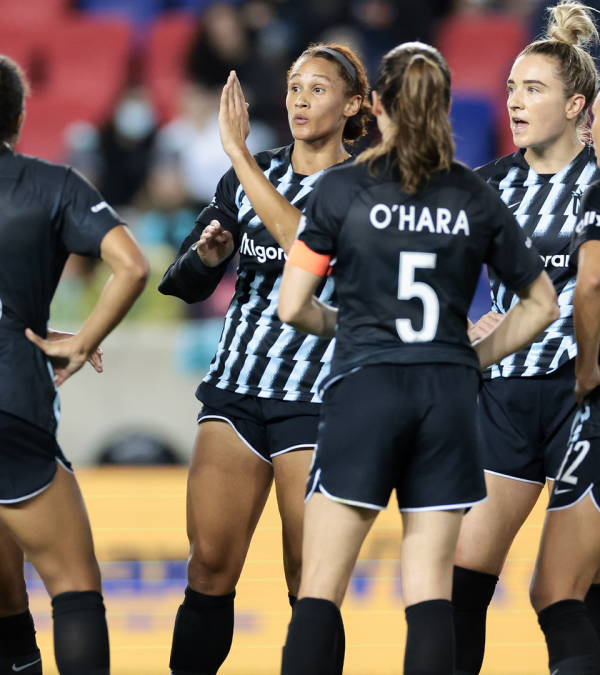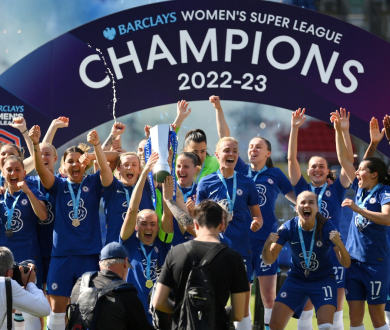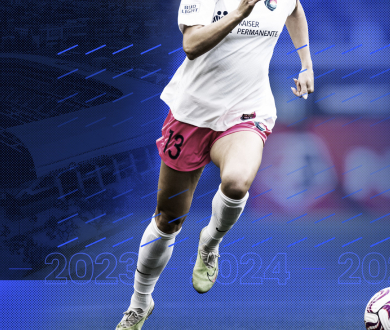
Academies as a Talent Pathway in the NWSL
When you look at the NWSL, you see the record-breaking commercial advancements that the league has intentionally engineered to increase capital investments back into the league. The NWSL’s strategic prioritization of increased attendance, growth in fanbase, expansion, and broadcasting rights is not to be ignored. From an investment perspective, these metrics are enticing and desirable - and are working. However, the soccer side of the league is a less marketed topic.
Background
At the moment, the NWSL trumps all other women’s soccer leagues when it comes to its ability to drive commercial investment. From their new broadcasting deal to the rising expansion fees, the league has a superior level of investment than that of any of its European counterparts. By the same token, European leagues are seemingly matching or possibly overtaking the NWSL when it comes to on-field talent. This was most notably discussed following the 2023 Women’s FIFA World Cup, where the USWNT, made up of nearly all NWSL players (except one), “under-performed” and various European national teams made up of players from European clubs outshined them.
Additionally, when looking at the finalists list for the Ballon d’Or Award (the industry-known strongest indicator of the best player in the world), the amount of European league players on the list dwarfs that of NWSL players. Even when checking other journalistic sources like The Guardian and ESPN, this trend continues. Specifically, the count of players in the “100 Best Female Footballers” 2022 list from The Guardian between the NWSL and European leagues is 14 to 81, respectively. The count of players in the “Women's Rank: The 50 best footballers in the world today” 2022 list from ESPN between the NWSL and European leagues is 8 to 40, respectively.
One tournament can’t and shouldn’t seal the fate of an entire nation’s sporting ability for the years to come, but it can point to some of the faults in the existing infrastructure when coupled with global player rankings. For women’s soccer in the United States, one of those faults is the (lack-there-of) NWSL club developmental academies.
When it comes to the European women’s soccer market, there is a key difference between the level of emphasis on the academy structure to develop youth talent from that in the United States. Women’s teams in Europe have reaped the benefit of the prioritization of academies in player development from primarily being jointly owned and operated by their broader clubs. Many European clubs (men’s teams primarily) have been dedicated to mastering their player development craft for some time. While joint management does not create benefits for women’s teams in every way, for player development, there are certainly practices around structuring and managing developmental academies that women’s soccer can, and undeniably has, taken from the men’s side.
For better or worse, and regardless of differing financial investment, there is a sense of competition between women’s soccer leagues around where the best talent plays (Europe or the United States). Therefore, for the NWSL to master the global market and establish itself as the preeminent league for global talent, a shift towards player development and a youth pipeline will be necessary.
In the United States, there is still a real concern for clubs with academies in men’s and women’s soccer that they can become mere cost centers where clubs will never (or rarely, at best) see a return on investment. This is particularly true in women’s soccer, where transfer fees (revenue from player sales) are not as high. Transfer fees for men’s clubs with academy-developed players can be a substantial revenue driver. While player transfer fees on the women’s side have increased, with the record highest being Keira Walsh at $470K in 2022 from Manchester City to FC Barcelona and five others in 2023 above $300K, there is potential for the transfer market to become more sophisticated alongside the women’s game. In the near-term, there is no clear case to be made that an academy will be a profitable investment for an NWSL club. However there are tangible reasons and ways to invest in youth development for the longevity of the success of clubs and the league.
Key Considerations
In the meantime, NWSL clubs are contemplating whether to pursue an academy as a talent pipeline. From our experience working with clubs across men’s and women’s soccer globally, five considerations should be weighed when evaluating the feasibility of building an academy for an NWSL club.
1. Existing youth soccer market in the region
The existing market of clubs and academies is a key aspect of whether or not to move forward with building an academy. The youth soccer market can be a quite profitable business, with most clubs being pay-to-play at a youth level, so clubs can face a fiercely competitive environment in their local area or be met with open arms for a partnership.
2. Development of homegrown rule in MLS
Should the NWSL introduce a homegrown rule, clubs who invested proactively in an academy will have a competitive advantage while others could end up behind-the-ball. In the MLS, the homegrown rule came to fruition in 2008 and has more recently averaged approximately one homegrown player per MLS roster. In the MLS, selling homegrown players for considerable fees in the transfer market is not the only benefit. Having homegrown players on your roster on their first contracts can also open up cap space. While teams still have to pay their contracts, these players don’t count against the salary cap. Teams can then utilize the additional space to get more out of their roster in a hard-cap structure.
3. Higher-capital leagues tend to lose more money on player transfers
In Europe, the English Premier League has historically lost more money than financially inferior leagues like La Liga. While the EPL may have one of the strongest academy systems, they also have the most capital to spend on purchasing players, which has historically led to a net loss on player transfers year over year. The same trend could occur if the NWSL continues to establish itself as the financially superior women’s league globally. For an NWSL club, the cost-benefit analysis between developing, selling, and then buying players in the transfer market can become convoluted.
4. NWSL calendar not matching that of European
The scheduling misalignment between the NWSL calendar and European football poses a challenge for scouting efforts targeting players on both sides. The construction of NWSL rosters occurs when European club contracts are active, complicating the recruitment process. Similarly, European clubs face difficulties acquiring players from the United States due to conflicting schedules with FIFA and UEFA calendars. Instances of players leaving NWSL teams to fulfill national duties have arisen before. Notably, as the NWSL season concludes in early November, the Women's Champions League, a premier European club competition, commences, tying players to the tournament. Despite the ongoing expansion of the NWSL, a shift to synchronize with the European calendar appears unlikely in the foreseeable future.
5. Future of the NWSL Draft
There is likely to be a shift from the NWSL Draft and the league’s dependence on the collegiate pipeline to more of an international approach as the league continues to develop. While the league follows the American sports model of using the collegiate system for their player pipeline, now this is not the model in the rest of the world. Another women’s league, the USLS, is also entering the U.S. market with no plans to use a draft for roster generation; taking a more European approach. Major League Soccer has also evolved away from depending on the draft as its primary player pathway. The MLS spent its first 15 years with a similar draft-dependent model until it turned to youth academies, and have more-recently coupled academies with second-teams in the MLS Next Pro League.
If your organization is evaluating building an academy talent pipeline, and you are interested in learning more about the feasibility of an academy in your market, get in touch with our team of expert advisors.












